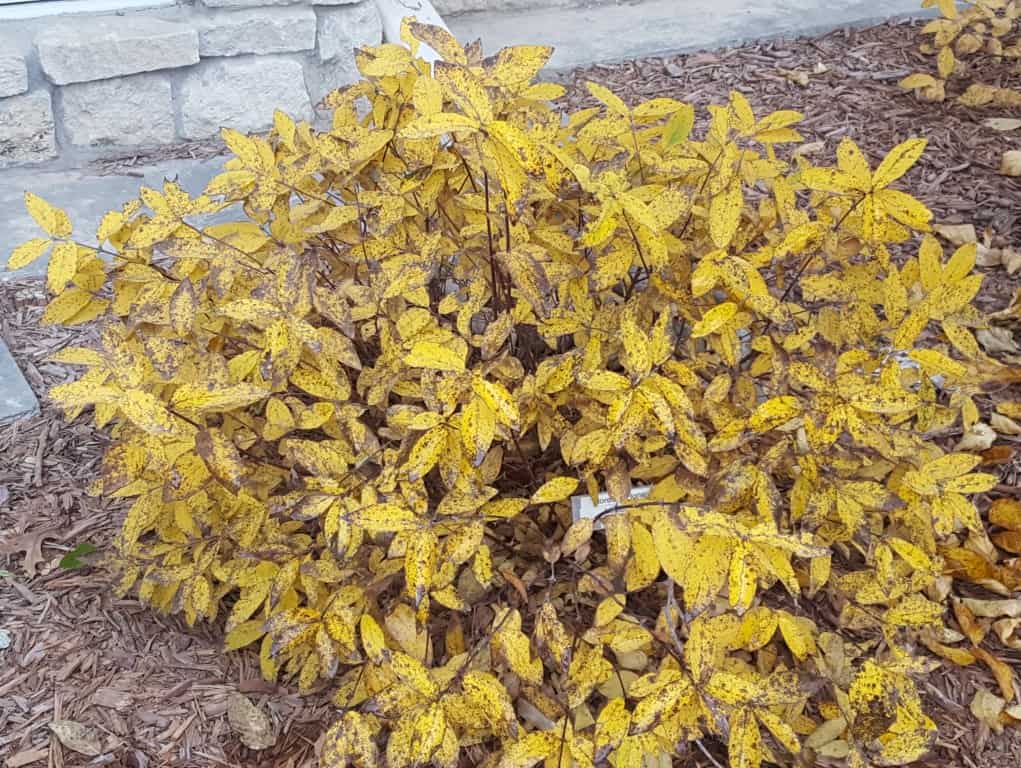As autumn leaves begin to litter our yards with colorful tones, the bright berries of fruits and shrubs shine among the leafless branches. Using berries in our yards provides for both us and wildlife. Besides the fruit, many berry bushes have alternate interest in their flowers, bark, and fall color. Using berries in limited numbers in the landscape can fill a niche for that extra interest that many of our ornamental shrubs cannot fill. Even if you just let the fruit go to birds and wildlife, you are creating a use for berry bushes that helps many. Below are the 5 of the best berries for landscape use in the central Great Plains.

Chokeberry, Aronia melanocarpa, is a great plant for more than just Great Plains landscapes, it is used across the globe for both landscape and fruit production. This medium sized shrub can grow from 4 to 10 feet in height and width and may sucker occasionally at the base. White flowers are borne in April and May and are followed by blue-black fruit that ripens in late summer. The fruit is extremely tart and should not be directly eaten, but is excellent when used for jellies and syrups, as it contains large amounts of antioxidants, vitamins, and minerals. Fall color is orange to red.

Blueberries, Vaccinium corymbosum, are not often used as landscape plants, being confined to large berry farms and occasionally potted on a patio or deck. However, they make excellent landscape plants if added to a drip line. When planting blueberries in the landscape, the soil of the hole should be amended with peat moss and acid fertilizer, and an twice yearly application of blueberry fertilizer should be applied to keep the soil acidic. Blueberry flowers are favored by specialist bees and honeybees and are borne in clusters. The fruit matures in July and is excellent for many purposes from eating fresh to baking and jelly. The leaves in the fall turn a brilliant red and the red stems persist through the winter. The autumn leaves can also be collected and used for tea, as they have an even higher concentration of antioxidants and minerals than the berries.

Honeyberry, Lonicera caerulea, is an excellent small shrub for landscape use. Two separate varieties are needed for pollination and fruit production of both plants, but there are several available in the nursery trade. This small honeysuckle grows 3 to 4 feet wide and tall and can grow easily in part shade to full sun. The cylindrical shaped fruit is ripe in midsummer following small, tubed-shaped, white flowers in spring. Fall color is an excellent yellow and this little shrub should be a part of any landscape.

Elderberries, Sambucus canadensis, can be found growing wild across the Great Plains. These medium sized shrubs can be thicket forming, but are a great addition to the landscape. Growing from 4 to 10 feet tall and wide, elderberry bushes can be planted in a wet spot or where a sump pump or downspout drains. They are also drought tolerant. The white, flat topped flowers are followed by black berries that ripen in late summer. The berries are very high in vitamin C and antioxidants and can be jellied or made into syrups and wine. The flowers too can be dipped in batter and made into fritters or added to tea. The large, palmate leaves add texture to the garden and there are several cutleaf cultivars available. Fall color is yellow.

Gooseberries, Ribes uva-crispa, are native across much of the world, with many species available. The garden gooseberry is a a great small shrub with many benefits. It is very drought and soil tolerant, being able to grow in many different environments. The branches are arching and add interest to the landscape. Small, tubular flowers are attractive to hummingbirds and butterflies. Berries are green to red when ripe and can be eaten fresh or made into pies and jams. The fall color is reddish orange and the spines along the stems keep many animals from eating the plant. They can also be used as a foundation plant in front of windows to deter intruders. Gooseberries grow 3 to 6 feet wide and 3 to 4 feet tall.

Check out our online store and gardens centers for these plants.
Happy planting!



